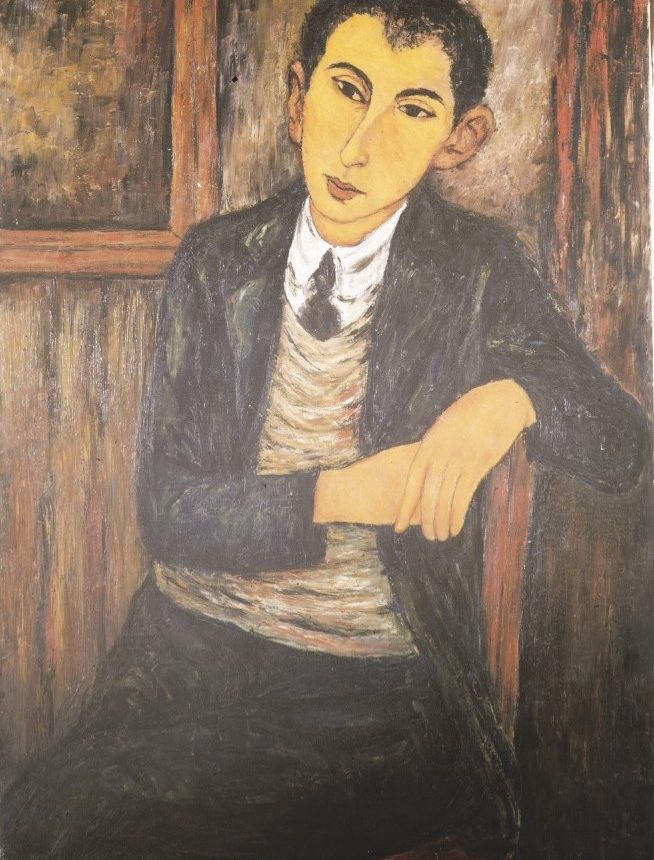Nathan GRUNSWEIGH
January 2, 2019Frania HART
January 2, 2019Aron HABER BERON
LODZ (POLAND) 1908-1933
When Aron Haber Beron moved to France, he went by the name of Beron in order to set himself apart from his brother Tévié. The latter arrived in France in 1927, met famous art dealer Zborowksi, and showed him drawings made by Aron who was then nineteen years old. Zborowski signed a contract to buy all of Aron Haber Beron’s drawings and paintings. Although not very enthusiastic, he also agreed to buy Tévié’s works. In Paris, Aron Haber Beron visited the Louvre. Two years after he arrived in Paris, he suffered from a mental illness, which became increasingly worse over time. Doctors sent him to La Ciotat to rest; following this trip, his condition seemed to improve.
He returned to Paris, went back to the Louvre and painted night and day. One afternoon, at the Louvre, he exclaimed: “I am a great painter and my painting has to be exhibited at the Louvre!” Following this incident, the police sent him to the Sainte-Anne hospital. Mrs Zborowski made sure that he was treated well and visited him regularly. The Zborowskis had him transferred to a private hospital. There, Haber Beron continued to paint and sent Zborowski his drawings. Shortly after he arrived at the private hospital, he ran off to his art dealer who advised him to return to his parents in Lodz. Haber Beron continued to send his paintings to Paris. Zborowski showed his work to René Gimpel, who also had a passion for the painter and bought many of his paintings. Gimpel planned to write a monograph on Haber Beron. The artist died three years after he arrived in Poland, as a result of a hunger strike. He was twenty-five years old.
Stories of Jewish Artists of the School of Paris 1905-1939
FRENCH-ENGLISH
Capitale des arts, le Paris des années 1905-1939 attire les artistes du monde entier. De cette période de foisonnement, un terme est resté, celui d'Ecole de Paris, qui recouvre une grande diversité d'expression artistique. Dans ce brassage dont Montparnasse est le creuset, un groupe se distingue : celui des artistes juifs venus de Russie, de Pologne et d'Europe centrale. Si leurs styles sont variés, un destin commun les rassemble : ils fuient l'antisémitisme de leur pays d'origine. Certains ont connu la célébrité dès les années 1920, tels Soutine, Lipchitz ou Chagall. D'autres n'ont pas eu le temps ou la chance d'y accéder. Près de la moitié a péri dans les camps de concentration nazis.
From 1905 to 1939, Paris attracted artists from all over the globe as the capital of the art world. This period of artistic proliferation became known as the School of Paris, and includes a great diversity of artistic expression. Within the teeming art world centred on Montparnasse, one group set itself apart: Jewish artists from Russia, Poland, and Central Europe. Although their styles were diverse, they shared the common fate of fleeing anti-Semitic persecutions in their home countries. Some became famous in the 1920s, such as Soutine, Lipchitz, and Chagall, while others did not have the time or the luck to gain renown. Nearly half of these artists died in Nazi concentration camps.





